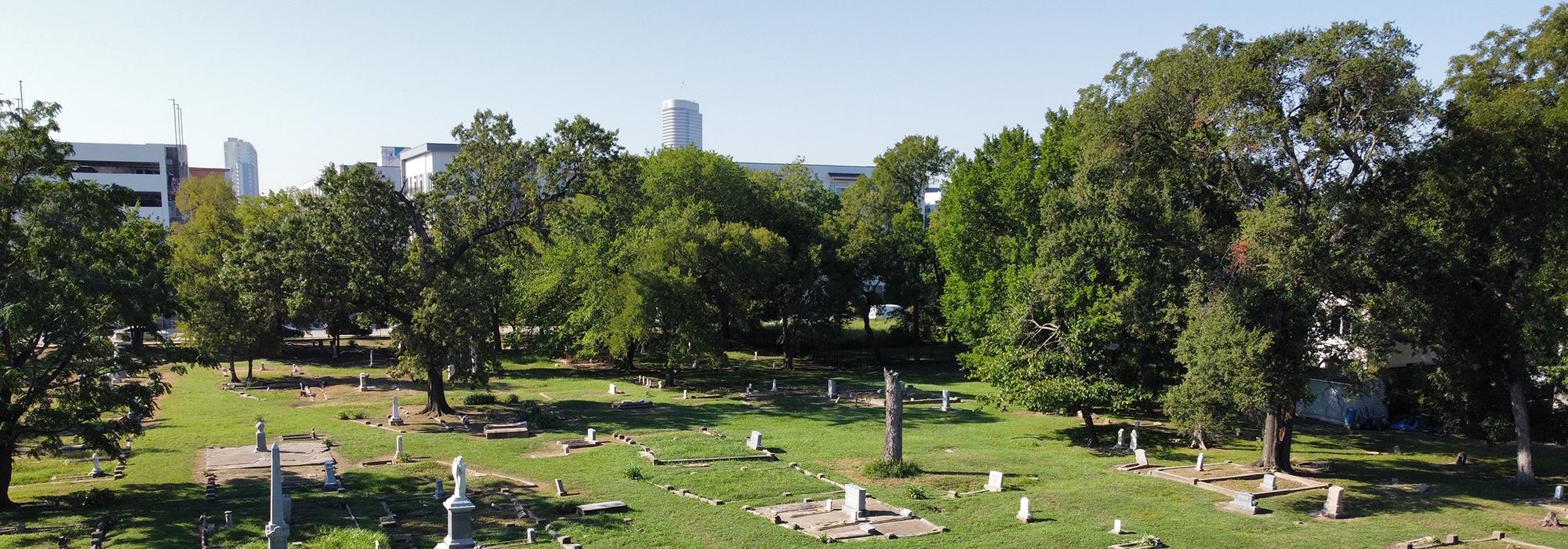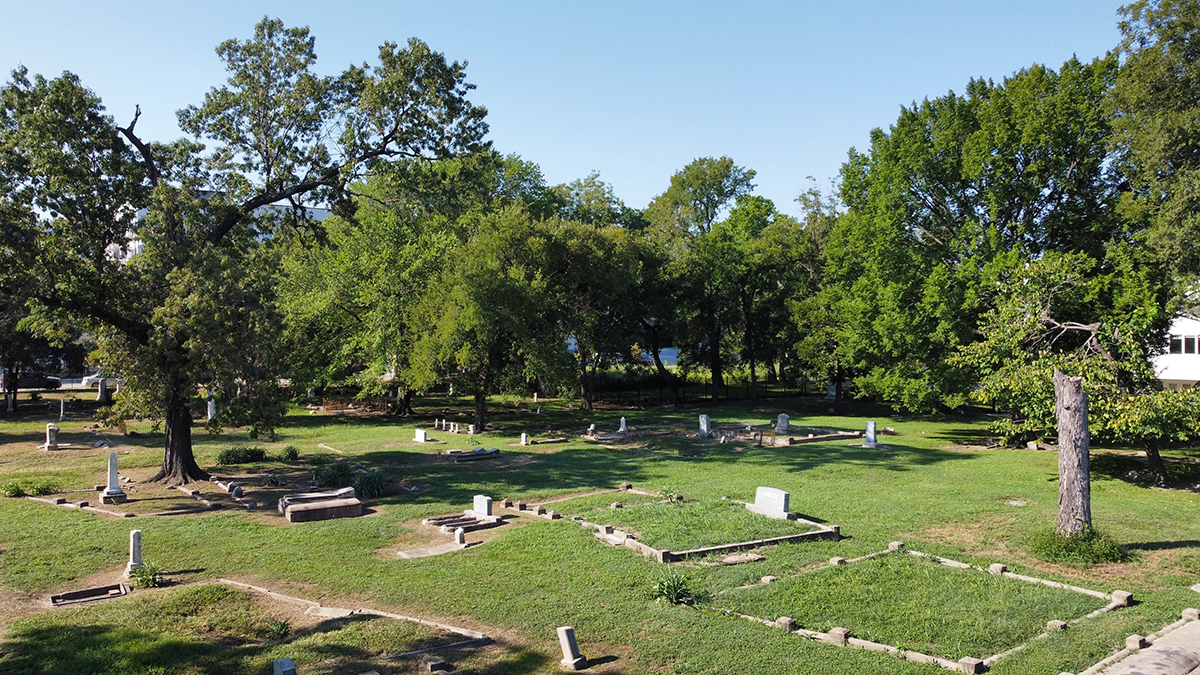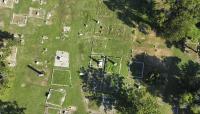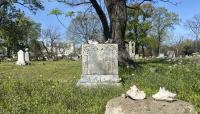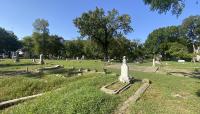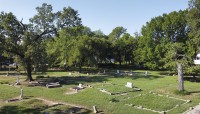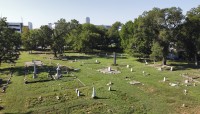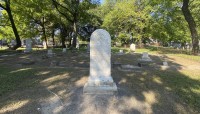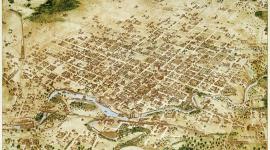Landscape Information
In 1875 a coalition of community leaders led by Richard Brock, Houston’s first African American alderman, purchased five-and-a-half acres in a floodplain along the banks of the White Oak Bayou, originally designated for the burials of enslaved peoples, to establish the first incorporated African American cemetery in the city of Houston. An 1877 plat map of Olivewood Cemetery, also called Olive Wood, Hollow Wood, and Hollywood, shows a decorative entry gate opening to an elliptical path, surrounded by 444 family plots. In subsequent years, the cemetery purchased additional land and expanded its grounds to eight acres, hosting more than 4,000 burials. The last known marked burial occurred in the 1960s.
Today, no formal entrance or elliptical path demarcates primary entrances. The original east-west grid pattern of the burial plots is almost indecipherable due to weathering and overgrown vegetation. Of the original acreage, only two acres have been cleared and revitalized. Two of the earliest extant headstones date to 1869 and 1871, just a few years after emancipation was announced in Texas (1865). Various mature canopy trees such as oaks, pecans, and elms remain. There is some extant evidence of traditional African American burial practices, such as the placement of upright pipes and seashells as grave features. Upside-down and inverted text can also be found on some of the graves, a common practice in West Africa to pay tribute to the inverted nature of the spirit world. Many prominent Houstonians including Brock, Rev. Elias Dibble, and businessman James Bell are interred at Olivewood.



